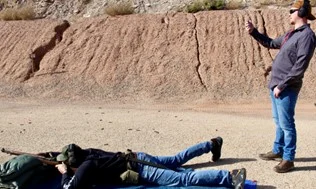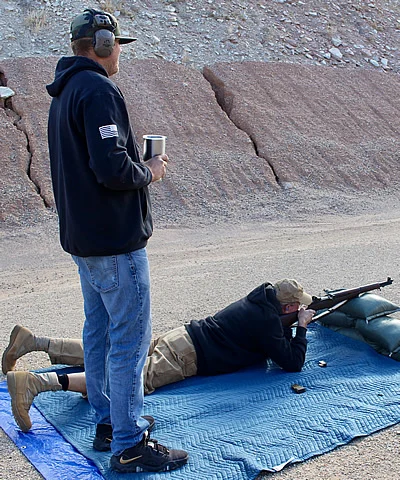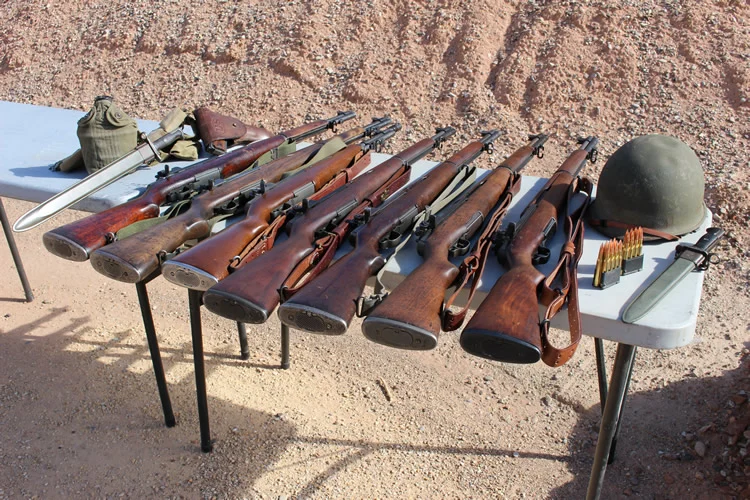The latest military hardware in Afghanistan saved the lives of Austin McPhail and others in the Army as they looked for roadside bombs in 2010.
But McPhail, 37, really loves the 89-year-old Garand—the venerable .30-06 that helped the Allies win WWII.
“I realized these M1 rifles are the reason you and I are having this conversation in English,” he says.
 McPhail says both of his grandfathers fought with Garands—one in WWII and the other in Korea. Then there’s the story of another American soldier.
McPhail says both of his grandfathers fought with Garands—one in WWII and the other in Korea. Then there’s the story of another American soldier.
“We’re honoring Joe Mann, who earned a Medal of Honor using one of these rifles,” McPhail says.
The five steel targets at this Garand match represent enemy soldiers that Mann killed from his exposed position near Best, Holland, on September 18, 1944. Even though he was wounded four times, Mann insisted on standing guard that night. The following morning, as the Germans advanced on his position, he threw himself on one of their grenades and died in the explosion.
“It’s hard to believe that anyone these days would have that much courage,” says Michael Madsen, a retired Army flight surgeon.
Madsen shoots first. “Probably need a calendar for me,” he tells McPhail, who’s running the timer.
It’s a casual approach to keeping score: McPhail uses an old-fashioned stopwatch. There’s no doubt about the hits—the ’06 enthusiastically thumps the steel.
Madsen is a self-described old guy, so his respect for tradition has grown through the decades. But 35-year-old Kyle Janes has been fascinated by WWII history since he was a kid.
“I don’t see a lot of young people getting into these older firearms,” Janes says. “It makes me kinda sad. When you’re holding one of these weapons—the awe you feel—that’s what drives me to collect them.”

Janes, Madsen and McPhail are real aficionados, so they know the Garand lingo: cartouches, Winchester trigger groups and lock bar sights. But even true believers have given up on one quest.
“All-originals—you’re not going to find them,” McPhail says. “They were re-arsenaled, even during the war. They had to put new barrels on them.”
But the search for authenticity continues, as Janes searches the internet for matching parts.
“I spent years bringing a 1942 up to all-correct,” he says.
Like wines, it’s all about the vintage. Madsen got his rack-grade H&R—5-million-something serial number, near the end of production in 1957—from DCM in 1995.
“Back when they were still turning out good ones,” he says.
Everyone is happy to admire the table covered with Garands, especially with their battle-hardened heritage.
McPhail compliments Madsen on his 1955: “A Springfield stock—that’s cool. It’s good-looking. I like it.”
Matches for full-power battle rifles, which are also affectionately described as wood-and-steel firearms, are held a few times a year on Saturdays at Red Cliffs. Cost is $10. Before each event, all range members will receive course descriptions and other particulars via email. For more information, contact Dan Briggs at (801) 580-2680.
By Kevin Foster Cox



